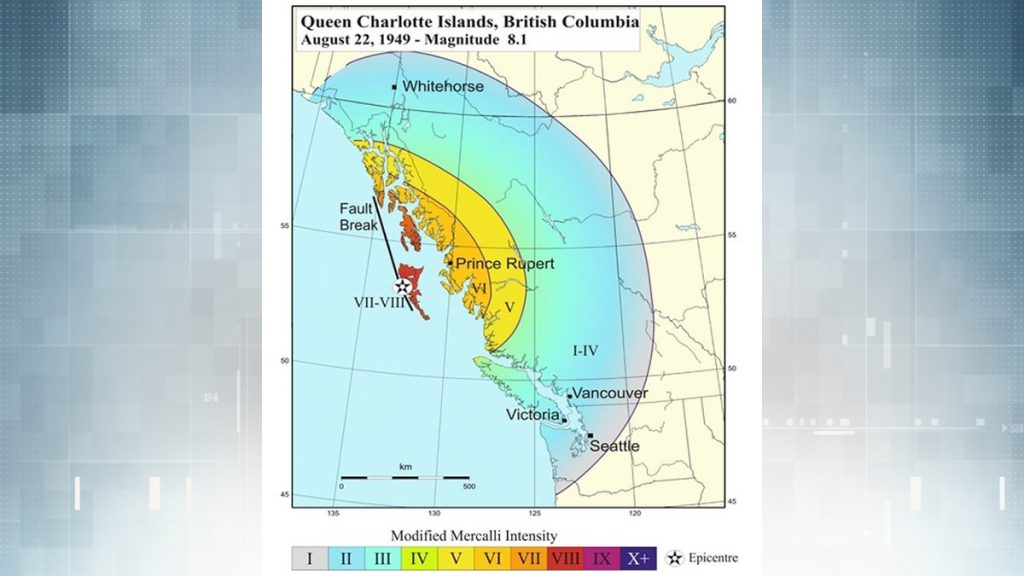
Cows were knocked over on Haida Gwaii, cars bounced in Terrace and buildings swayed in Prince Rupert when Canada’s largest earthquake struck 70 years ago today north of Vancouver Island.
The 8.1-magnitude earthquake was the largest in the nation’s history. The earthquake struck at 8:01 p.m. PDT on Aug. 21, 1949 (UTC 4:01 a.m. Aug 22, 1949) and the Modified Mercalli (MM) Intensity Scale lists it as a VII-VIII (very strong to severe).
It occurred on the Queen Charlotte Fault, the boundary between the Pacific and North American plates that runs underwater along the west coast of the Haida Gwaii.
According to Natural Resources Canada, the shaking from the earthquake was so severe on Haida Gwaii (formerly the Queen Charlotte Islands) that cows were knocked off their feet and a geologist with the Geological Survey of Canada working on the north end of Graham Island could not stand up.
Chimneys also toppled and an oil tank in the Cumshewa Inlet collapsed. In Terrace, B.C., cars were bounced around and standing on the street was described as “like being on the heaving deck of a ship at sea,” according to Natural Resources Canada.
In Prince Rupert, windows shattered and buildings swayed.
Before Canada was found in 1867, there were written records in Japan of a tsunami generated by an estimated 9 magnitude earthquake in the Cascadia Subduction Zone off British Columbia in 1700. Vancouver Island and First Nations’ oral histories describe how the tsunami destroyed a village at Pachena Bay on the west coast of the island leaving no survivors. They also say the shaking damaged houses in the Cowichan Lake region.




